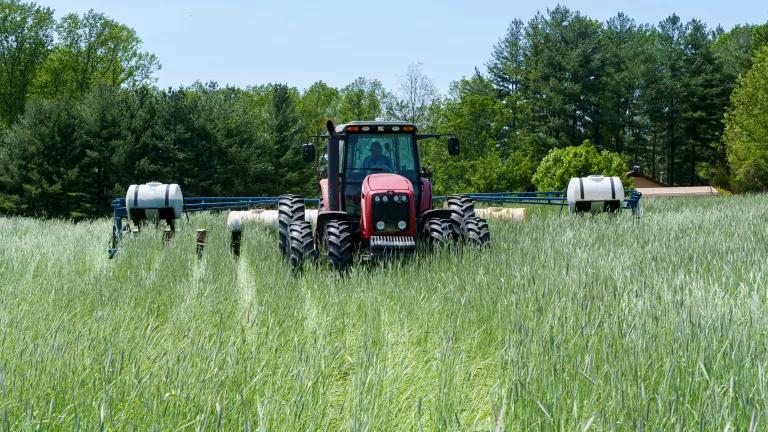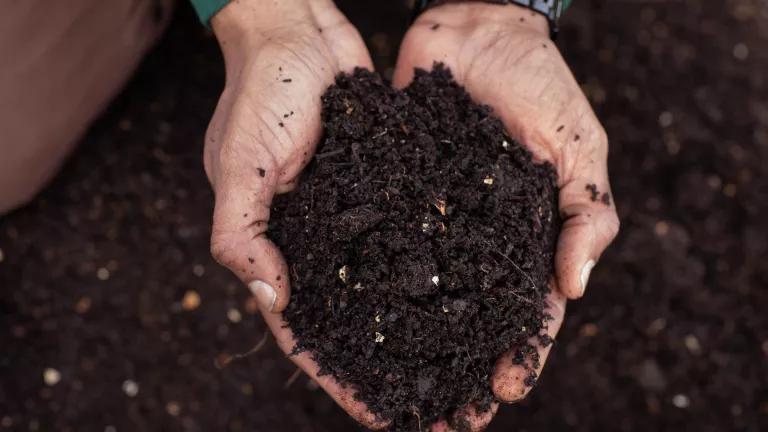Inflation Reduction Act Can Fund Food Waste Solutions
The newly signed Inflation Reduction Act of 2022 provides more than $300 billion in strategic investments to confront the climate crisis. This blog will highlight provisions in the Inflation Reduction Act that can be leveraged for food waste reduction.

The newly signed Inflation Reduction Act of 2022 provides more than $300 billion in strategic investments to confront the climate crisis, including $5 billion for Greenhouse Gas Planning and Implementation Grants that can be used to reduce food waste, in addition to significant investments in USDA conservation programs that will improve our agricultural practices. This bill is Congress’s strongest climate action to date, and while it does include some harmful fossil fuel provisions that will need to be addressed, the investments it directs toward climate issues, including food waste, can yield significant gains. This blog will highlight provisions in the Inflation Reduction Act that can be leveraged for food waste reduction.
Addressing food waste is a top climate solution. In the United States alone, up to 40% of food is wasted each year, and when that food is wasted, all the energy, water, cropland, and money that goes into producing, processing, and transporting it are wasted too. On top of all that, when food is decomposing in landfills, it releases methane, a greenhouse gas that, pound for pound, traps more than 80 times as much heat on our planet, in the short term, as carbon dioxide.
While the Inflation Reduction Act does not explicitly mention programs related to food waste reduction, given that the food we waste is responsible for roughly 8% of global GHG emissions, the climate pollution reduction grants authorized in the Act should fund projects that prevent food from being wasted and that recycle food scraps. NRDC strongly encourages EPA to include food waste projects as eligible to receive funding within the following grant programs.
The bill allocates $250 million for Greenhouse Gas Air Pollution Planning Grants and $4.75 billion for Greenhouse Gas Air Pollution Reduction Implementation Grants, for a total of $5 billion towards both climate pollution reduction grant programs.
The Planning Grants can be used by state, local, and tribal governments for planning actions such as organic waste bans, which are most effectively implemented if informed by typically costly measurement practices like waste characterization studies. These policies, especially when linked to baseline and ongoing measurement, have proven to reduce food scraps going to landfill and increase composting.
The Implementation Grants can be used by state, local, and tribal governments to build composting infrastructure at all scales and other infrastructure needed to implement food waste reduction programs. In addition to the climate benefits, composting has great job creation potential: composting facilities on average can provide twice as many jobs as landfills and four times more jobs than incinerators. There are existing models from states like California which have designated portions of their greenhouse gas reduction grant programs to food waste reduction projects. So far, California has invested over $24 million in food waste prevention and reduction projects.
The Inflation Reduction Act also allocates almost $21 billion for USDA conservation programs, like the Environmental Quality Incentives Program, that help farmers conserve natural resources for the future while also improving agricultural operations today.
One conservation practice that aids in food waste reduction is compost application, especially if compost is made from nutrient-rich feedstocks such as food scraps. USDA is finalizing standards for the soil carbon amendment conservation practice (Code 336) that will support the application of compost along with other government‐approved carbon amendments (like biochar) to increase soil carbon sequestration and improve soil health on all land uses. Compost application has many benefits, including closing the nutrient loop by recycling nutrients from food scraps back into the soil to grow more food, and reducing methane emissions by properly managing food scraps and keeping them out of landfills.
This conservation funding, in addition to the climate pollution reduction grants, has the potential to transform agriculture in our country from an extractive system to one that enriches soils, provides a reliable source of nourishing food, and generates less waste. To realize this potential, work needs to be done to ensure equitable access to these opportunities and the benefits they create, such as by earmarking funds specifically for chronically under-resourced communities, ensuring diversity in geographic distribution and scale of projects, and similar practices.
There is a huge opportunity in the Inflation Reduction Act to address food waste, and it is now on the federal agencies, like EPA, USDA, and others, to make that a reality. Bold action is needed to achieve our national goal of cutting food waste in half by 2030 and dedicating some of these funds from the Inflation Reduction Act can help us get there.




